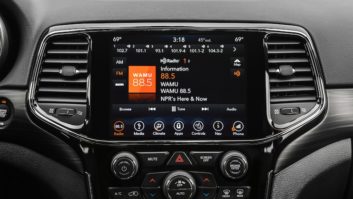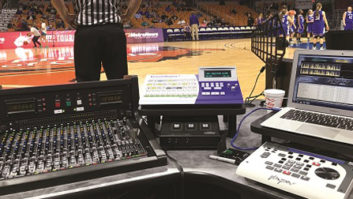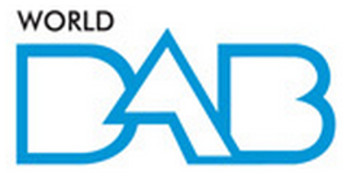LAS VEGAS Car Internet and car TV are gaining ground. While this development is seen by many radio broadcasters as threatening, there is at least a glint of good news: Some versions of the new products include radio features.
That will be welcome to broadcasters who are struggling to keep radio relevant amid proliferating entertainment delivery platforms in a shrinking economy. The trends were among the developments of note at this year’s Consumer Electronics Show.
Attendance was dramatically lighter. The Consumer Electronics Association pegged attendance at around 110,000, a drop of about 15 percent compared to 130,000 last year.
Like broadcasters, the companies that make up the CE industry are trying to at least maintain market share in tough times. Several manufacturing reps told Radio World that while consumers are certainly curtailing spending on big ticket items like cars, people seeking entertainment remain willing to pay for inexpensive audio devices.
Here are some of the more notable radios coming on the market this year, as well as information about technologies or devices that compete with our medium.
Blaupunkt, miRoamer Collaborate on Internet Car Radio

The Hamburg 600i, a Blaupunkt miRoamer prototype single DIN in-dash Internet radio, comes with phone capabilities so the user can dial a number from the radio for hands-free calls and also connect via Bluetooth to the Internet. Blaupunkt plans to release two versions of an in-dash Internet radio, developed with miRoamer, in the second half of the year to the U.S. and European markets. The companies showed prototypes, single DIN and double DIN units, named the Hamburg 600i and the New Jersey 600i, respectively.
(The DIN standard was established by a German standards body, Deutsches Institut für Normung and is commonly referred to as “DIN car radio size.” It was adopted as an international standard in 1984. Head units generally come in a single or double DIN size.)
The radios come with phone capabilities so the user can dial a number for hands-free calls; it will also connect via Bluetooth to the Internet. Blaupunkt is adapting existing models with Internet capability, said miRoamer founder and CEO George Parthimos, in an interview.
By pushing a button, users can switch from AM/FM to miRoamer’s aggregated content from some 30,000 Internet radio stations — without third-party devices or plugging in cords. Users can customize their content on the MiRoamer Web site from home or in the car, though the company believes most customers will want to customize content before getting in the vehicle, Parthimos said.
Users can browse genres or stations and customize preferences, providers and search options online at miroamer.com. Users also can add their own MP3 content to their Internet station. In ancitipation of this debute, last year at this show the Torian Wireless-owned miRoamer debuted a redesigned version of its miRoamer Internet radio portal.
In addition to the Internet radio, drivers also can use other features in the radio such as the phone, address book and navigation.
Because the customer uses Bluetooth from a cell phone to actually connect to the Internet in the car, the price for that connection depends on what the cell phone carrier charges for a data connection. When connecting to the Internet via an external device such as an iPhone, the customer’s existing mobile service provider is the default network. The cost of the actual radio was undetermined at press time.
MiRoamer claims its products are the first Internet car radios. However, Autonet, another CES exhibitor, has offered in-car Internet since last year that could potentially be used for music streaming from several providers. San Francisco-based Autonet Mobile has built a network that turns the car into a WiFi hotspot, allowing multiple passengers to connect their own WiFi-enabled gadgets to the Internet at the same time. The autonet router runs over 3G and 2.5G cellular data networks.

An Internet radio from iLuv, the iNT170 Internet Dual Alarm Clock lets users access 15,000 Internet radio stations as well as podcasts. But miRoamer and Blaupunkt’s prototypes appear to be the first models to offer in-dash Internet radio.
Dashboard Devices Car Computer Offers Internet, Radio
Another company to offer car Internet is Dashboard Devices.
The company, specializing in infotainment for vehicles, unveiled a $2,700 in-dash computer for the car that features several flavors of radio, WiFi, navigation and DVD playback. The ENV computer runs Windows XP with an automotive interface and has a 160 GB hard drive. The device reads aloud the users’ e-mail and uses voice activation for other functions. Dashboard Devices says the device will have Internet radio and optional satellite radio capability, USB iPod control and FM radio.
Planned for spring production, the ENV computer series initially will be sold through computer resellers and then to CE car audio retailers, said the company.
AT&T CruiseCast to Bring Sat TV to Car
Sirius XM satellite radio now has competition from AT&T. The telecom company plans to launch its CruiseCast mobile TV/radio service later this year.
Developed with antenna maker Raysat, the Ku band-delivered service will use spectrum and transponders leased from Intelsat to deliver 22 satellite TV channels from networks including Disney, Nickelodeon, CNBC, Bravo, Comedy Network and Cartoon Network.
The system will also provide 20 satellite radio channels, though AT&T has not yet specified a programmer.
The product has a compact, low-profile antenna for use on cars, trucks and SUVs, and a technology that AT&T says overcomes line-of-sight obstacles such as overpasses, buildings, trees or tunnels.
It will be sold through auto dealerships and other automotive product vendors where buyers can have the compact antennas and receivers installed to link into rear-seat entertainment systems. Subscription involves the purchase and installation of a $1,200+ equipment package and an ongoing $28 per month service fee.
The service competes with Sirius XM’s Backseat TV that delivers three mobile TV channels at an additional subscription cost of $6.99 per month.
Other Mobile Video on the Way
Audiovox and Qualcomm’s MediaFLO plan to deliver 20 channels of live video into the car using an add-on device from Audiovox that links to an existing car video screen; the Audiovox device is expected to retail at around $500. The device is expected to launch in nine months; the companies have not named a carrier service. MediaFLO TV is now offered on cell phones.
Also, Kenwood demonstrated a prototype car stereo system receiving live TV over the proposed ATSC mobile DTV standard; Harris Broadcast and LG also demoed such equipment. Broadcasters said they intend to launch mobile DTV on 63 stations in 22 markets. While most observers believe mobile video will compete with radio in the car, a Kenwood spokesman says to look at it another way: two audio channels are planned for the service, and, rather than seeing mobile video as a competitor, radio should be looking at this as a new channel on which to provide its content.
More Companies Debut Internet Tabletops
Not only is Internet radio growing in the car, several manufacturers plan to introduce their first tabletop Internet radios this year.
Cobra plans to ship two tabletop Internet radios in March. The CIR 1000A, retailing for $199, includes WiFi, Internet access, audio streaming from a PC and Internet station presets. It decodes MP3, WMA and Real Media streams. The CIR 2000A at $299 is a three-piece unit with separate speakers, FM tuner, single-CD player, music playback from an SD card and includes a USB drive. It accesses ShoutCast and World Station portals to offer more stations.
Grace Digital is debuting two Internet radios. The GDI-IR3020 is an iPod-docking Internet radio with built-in WiFi and Ethernet port and ability to stream music from a networked PC. The user can access more than 15,000 Internet radio stations using Revica. The unit streams multicast HD Radio stations, Internet services from Pandora and Sirius Internet Radio. The GDI-IRP600 is a portable AC/DC Internet radio with FM tuner, WiFi and access to some 11,000 Internet radio stations. Price was not set at press time.
The first Internet radio from iLuv, the iNT170 Internet Dual Alarm Clock lets users access 15,000 Internet radio stations as well as podcasts. The unit includes 40 presets that can be used for Internet radio as well as FM stations. The unit lists at $199.99.
From Netgear, the Digital Entertainer Elite EVA9150 is a combination digital media adapter and digital media player that streams audio and video to an A/V system from a networked PC or network-attached storage device. The unit streams media directly from the Internet such as YouTube, Internet radio, Flickr photos, RSS, and podcasts. The product includes a 500 GB hard drive for extra storage of movies, photos, and music. An HDMI port, two USB ports for iPod and USB drives are included. The unit, due this month, will list at $399.
The Sonoro Elements W tabletop radio can access 13,000 Internet radio stations. Users can find more stations through www.mysonoro.com.
Danish brand Tangent Audio has entered the Internet radio market with the Quattro WiFi Internet/media player/FM-clock radio. The unit access Internet stations through the Reciva portal and lists for $399. For the same price, the Cinque AM/FM/CD clock radio adds a single CD player. It also features MP3/WMA CD playback.
Frontier Silicon Targets U.S. Internet Radio Market
Frontier Silicon says it has some 85 percent market share of DAB Internet radios and now is aiming at the U.S. Internet radio market.
It plans to work with manufacturers to bring new Internet radios to the market for less than $150.
While WiFi-based Internet radios are no longer a novelty, Frontier claims its Venice 6.2 hardware/software-based platform will allow a new generation of products to retail well below current prices that average above $200.
The company provides modules containing the RF and baseband chips for audio decoding and demodulation to make the manufacturing process easier for Chinese radio makers, said Marketing Director Mark Hopgood.
Frontier launched the Venice 6.2 module in European markets as a single solution for receiver manufacturers looking for an integrated approach to build DAB/DAB+, FM-RDS and Internet streaming functionality into their audio products. The platform is said to provide support for AAC+, MP3, Real, WMA and FLAC codecs.
Frontier Silicon says this company has worked with online content providers such as Pandora, Last FM, Rhapsody and Sirius XM online to assure support for those services.
Internet Media Device Alliance Grows
Some 70 companies joined a new alliance for Internet media devices at the group’s meeting at CES.
That’s according to Frontier Silicon Marketing Director Mark Hopgood. Frontier Silicon is a founding member, along with the BBC, Global Radio and others.
In an interview, Hopgood said the companies paid $500 each to join. New members include Clear Channel Broadcasting and Microsoft, he said.
The Internet Media Device Alliance aims to define technical standards, functions and profiles to encourage development of Internet media devices. Other objectives include promoting Internet-connected device technology to consumers and retailers and to provide a consistent user experience between products.
“Retailers are confused about what Internet radio means,” he said.
Further information is available at www.imdalliance.org. Membership is open to consumer electronics OEMs, retailers, radio broadcasters, content aggregators, online music service providers, device manufacturers and technology providers.
Northrop Grumman, GSS, SiLabs Partner on Warnings

Silicon Labs has reduced the size of its FM chip from six inches to about one inch. The company is working with Global Security Systems and Northrop Grumman to encourage the use of FM chips in cell phones so they can distribute emergency alerts using RDS. Photo by Leslie Stimson NAB and iBiquity aren’t the only organizations that want cell phone carriers to install or turn on FM chips in their handsets.
Global Security Systems, Silicon Labs and Northrop Grumman would like to see FM chips in cell phones as well as a way of distributing emergency alerts using RDS.
While GSS said stations in parts of 10 states are using its AlertFM system. It would like to see more broadcasters and states sign on. It’s enlisted the help of Silicon Labs to shrink an FM chip so they consume less power and improve their signal-to-noise ratio — all in an effort to convince cell phone carriers to install FM chips on their devices, company representatives told Radio World.
Silicon Labs Senior Marketing Manager Wade Gillham said his company has reduced the size of the materials that make up its FM chip dramatically, from six inches to about an inch. Its FM chip is in the top-selling five cell phone and media players, he said.
Northrop Grumman recently joined this effort to deploy national, state and local alert and warning systems that use the wireless and non-wireless communications infrastructure as well as consumer devices such as cell phones, music players and GPS devices.
GSS has been working on an integrated alert system it hopes will be deployed by homeland security officials. Northrop Grumman manages the emergency information technology infrastructure in 80 U.S. cities.
The GSSNet AlertFM system uses an FM chip that can be inserted into many common consumer devices to enable them to receive weather, homeland security and local alerts including traffic emergencies and Amber alerts. The devices receive content from broadcasting partners, as well as state and local agencies to ensure distribution of NOAA, DHS and Federal Emergency Management Agency content.
GSS, Silicon Labs and Northrop Grumman have formed a coalition and invited NAB, more broadcasters and cell phone carriers to join, to address implementation of public alert and warning systems.
Fraunhofer Demos MPEG for iPod, iPhone
Fraunhofer IIS, a provider of MPEG audio technologies, announced new mobile platform-optimized (e.g., 3G and WiFi) versions of some of its codecs. The main mobile target, according to Fraunhofer, is the iPhone.
Top of the list for mobilization are the MPEG-4 HE-AAC, MPEG-4 HE-AAC v2, MPEG Surround, MPEG AAC-LC, MPEG HD-AAC and MPEG AAC-ELD. These are being optimized for use with low resource consumption devices such as the iPhone and similar devices.
Fraunhofer also demoed MPEG Surround through a prototype iPod docking station and a car.
Harald Popp, head of the Multimedia Realtime Systems department, said the company believes MPEG Surround will become a major online distribution format when downloading music, movie and TV content, and offers the music industry a way to sell iPod-compatible surround content through the existing stereo download infrastructure.
THX, Neural Featured in 2010 Lincolns
THX II Certified Audio systems, featuring THX Slot Speaker and Neural Surround technology, will be available in the 2010 Lincoln lineup. The companies said the Lincoln MKT, which debuted in January at the North American International Auto Show, is one of the first automobiles to feature Neural Surround, a home theater technology to improve the way surround sound is experienced from MP3s and other compressed digital music formats.
The 2010 Lincoln vehicles feature THX II Certified Audio systems, available with 5.1 surround sound playback and Neural Surround for up-mixing stereo tracks. The Neural Surround technology is designed to improve how Lincoln owners experience compressed digital music stored on their iPods and mobile phones, as well as HD Radio and satellite radio.
Neural Audio Sold to DTS
DTS Inc. has acquired Neural Audio Corp. It plans to expand its offerings in the broadcast, satellite radio, automotive and gaming markets. DTS makes decoders for surround sound processors.
The California-based DTS paid $7.5 million in cash and may pay up to $7.5 million more over five years if certain conditions are met. The transaction closed on Dec. 31. DTS President/CEO Jon Kirchner announced the purchase.
While Radio World readers know Neural for its work in surround sound audio for HD Radio, the Kirkland, Wash.-based company also developed surround audio for music, movies, broadcast video and video games.
Among those moving to DTS with the deal are Geir Skaaden, chief executive officer; Mark Seigle, president and chief operating officer; Jeff Thompson, director of engineering, and James “JJ” Johnston, chief scientist.
Hunter, Soundolier Add Audio to Ceiling Fan
Ceiling fan maker Hunter debuted the Concert Breeze Fan & Sound System with integrated Soundolier wireless technology.
The product is said to be the first and only “ceiling fan sound system, blending the cool comfort of moving air with the beauty of rich audio.” Hunter says the device solves the issue of large speakers cluttering the room and instead gives users audio using a 2.4 GHz wireless audio system enclosed within the light fixture.
The system, which plays audio within some 300 feet, will be at retail locations early this year. The fan is available in indoor and indoor/outdoor versions.
Did you attend CES? What caught your eye? Tell us at[email protected].











